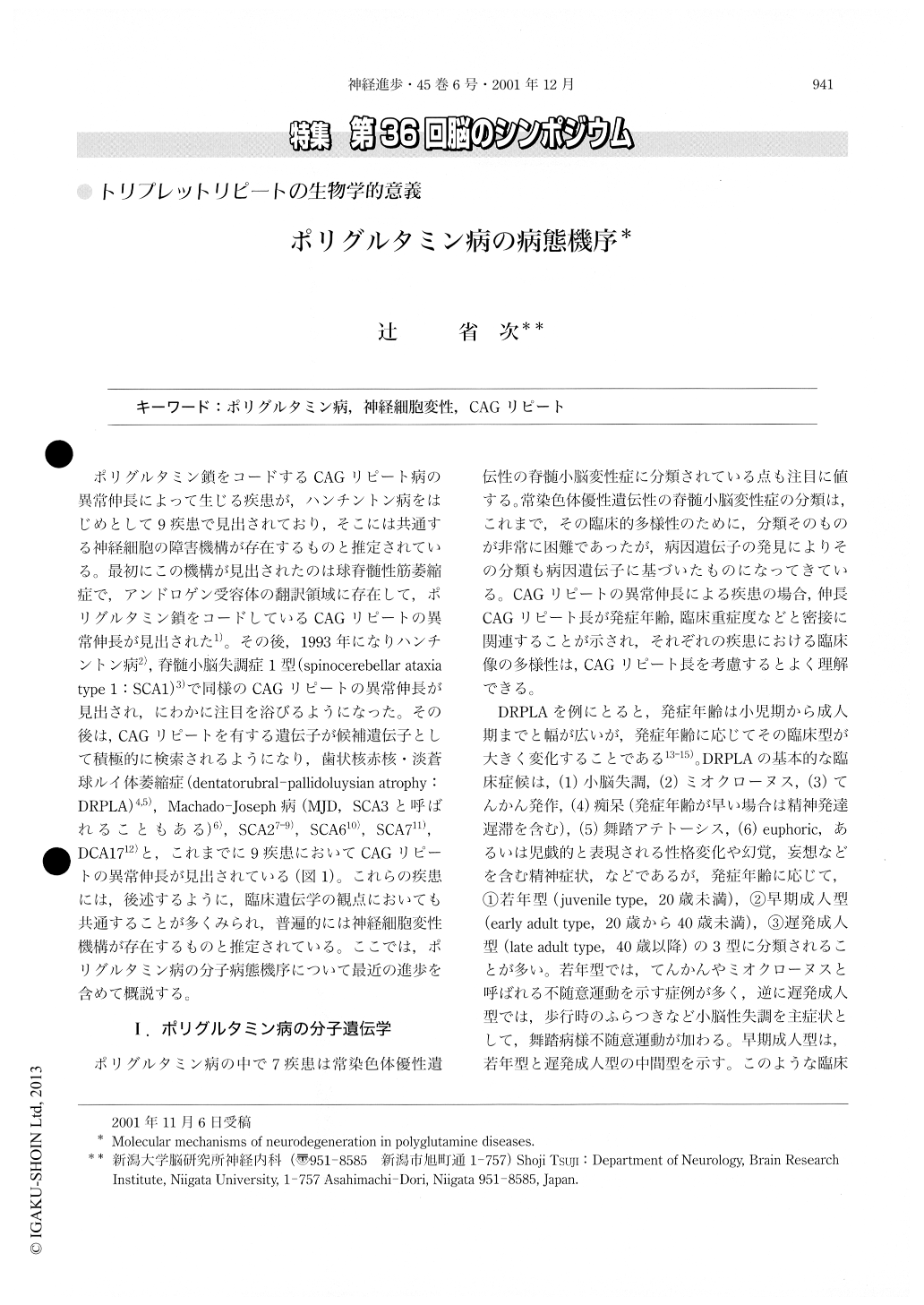Japanese
English
- 有料閲覧
- Abstract 文献概要
- 1ページ目 Look Inside
ポリグルタミン鎖をコードするCAGリピート病の異常伸長によって生じる疾患が,ハンチントン病をはじめとして9疾患で見出されており,そこには共通する神経細胞の障害機構が存在するものと推定されている。最初にこの機構が見出されたのは球脊髄性筋萎縮症で,アンドロゲン受容体の翻訳領域に存在して,ポリグルタミン鎖をコードしているCAGリピートの異常伸長が見出された1)。その後,1993年になりハンチントン病2),脊髄小脳失調症1型(spinocerebellar ataxiatype1:SCA1)3)で同様のCAGリピートの異常伸長が見出され,にわかに注目を浴びるようになった。その後は,CAGリピートを有する遺伝子が候補遺伝子として積極的に検索されるようになり,歯状核赤核・淡蒼球ルイ体萎縮症(dentatorubral-pallidoluysian atrophy:DRPLA)4,5),Machado-Joseph病(MJD,SCA3と呼ばれることもある)6),SCA27-9),SCA610),SCA711),DCA1712)と,これまでに9疾患においてCAGリピートの異常伸長が見出されている(図1)。これらの疾患には,後述するように,臨床遺伝学の観点においても共通することが多くみられ,普遍的には神経細胞変性機構が存在するものと推定されている。ここでは,ポリグルタミン病の分子病態機序について最近の進歩を含めて概説する。
Unstable expansion of CAG trinucleotide repeats coding for polyglutamine stretches has been identified to be a new mechanism for at least 9 hereditary neurodegenerative diseases, which include Huntington disease, spinal and bulbar muscular atrophy (SBMA), spinocerebellar ataxia types 1, 2, 6, 7 and SCA 17, Machado-Joseph disease (MJD/SCA 3) and dentatorubral-pallidoluysian atrophy (DRPLA). Initial experiments after the discovery of causative genes demonstrated that expression of mutant proteins, particularly truncated proteins, containing expanded polyglutamine stretches led to aggregate body formation and apoptosis.

Copyright © 2001, Igaku-Shoin Ltd. All rights reserved.


